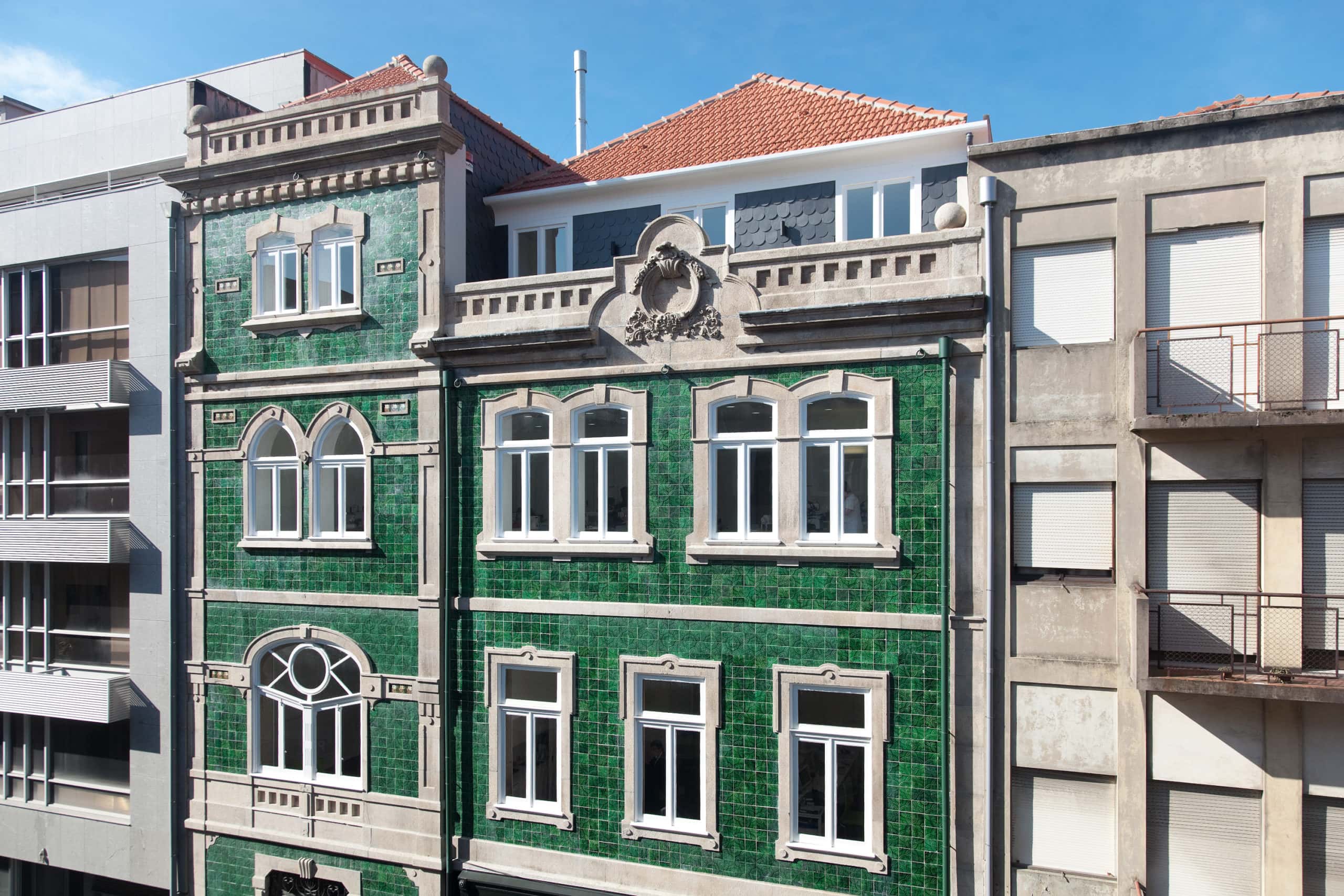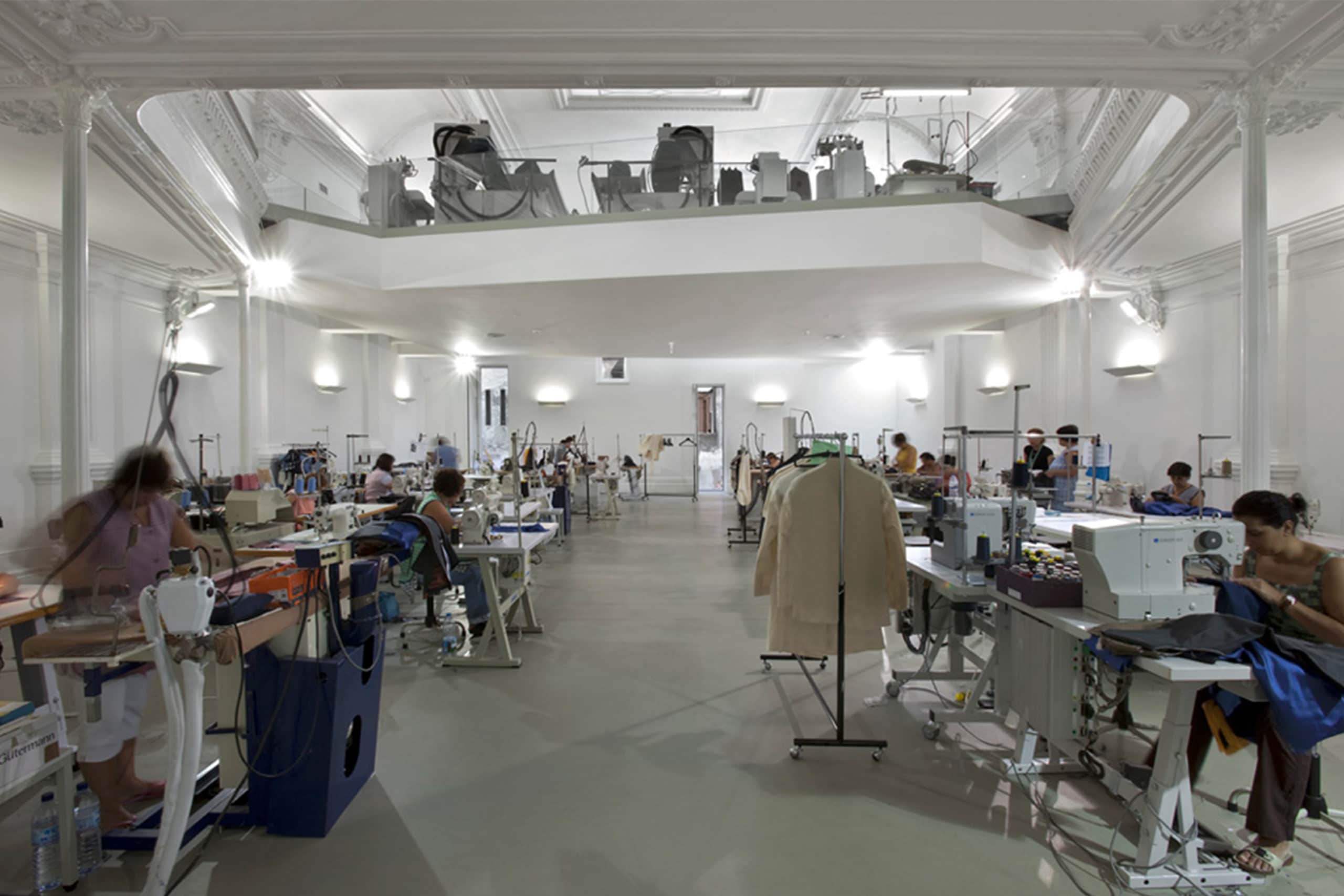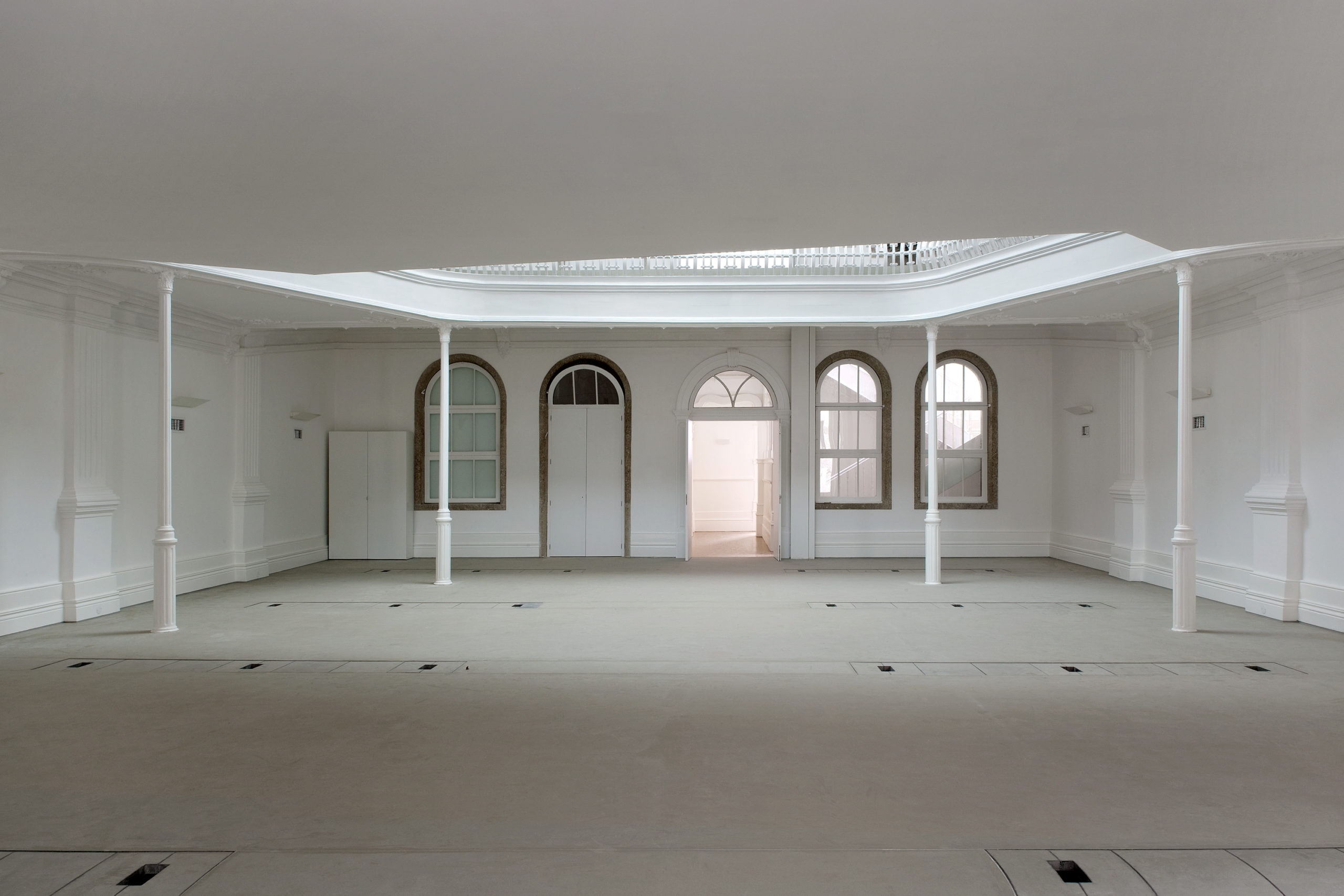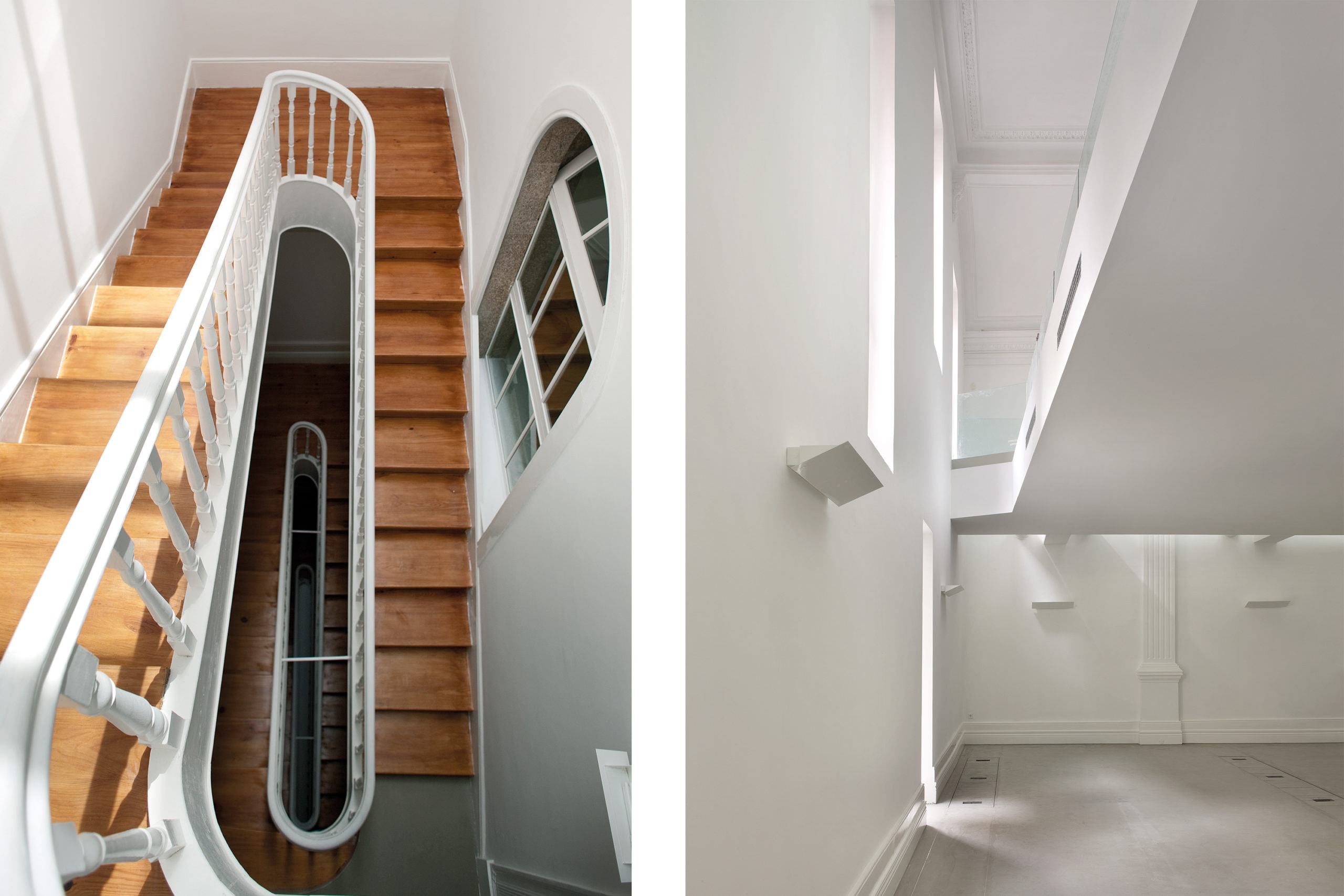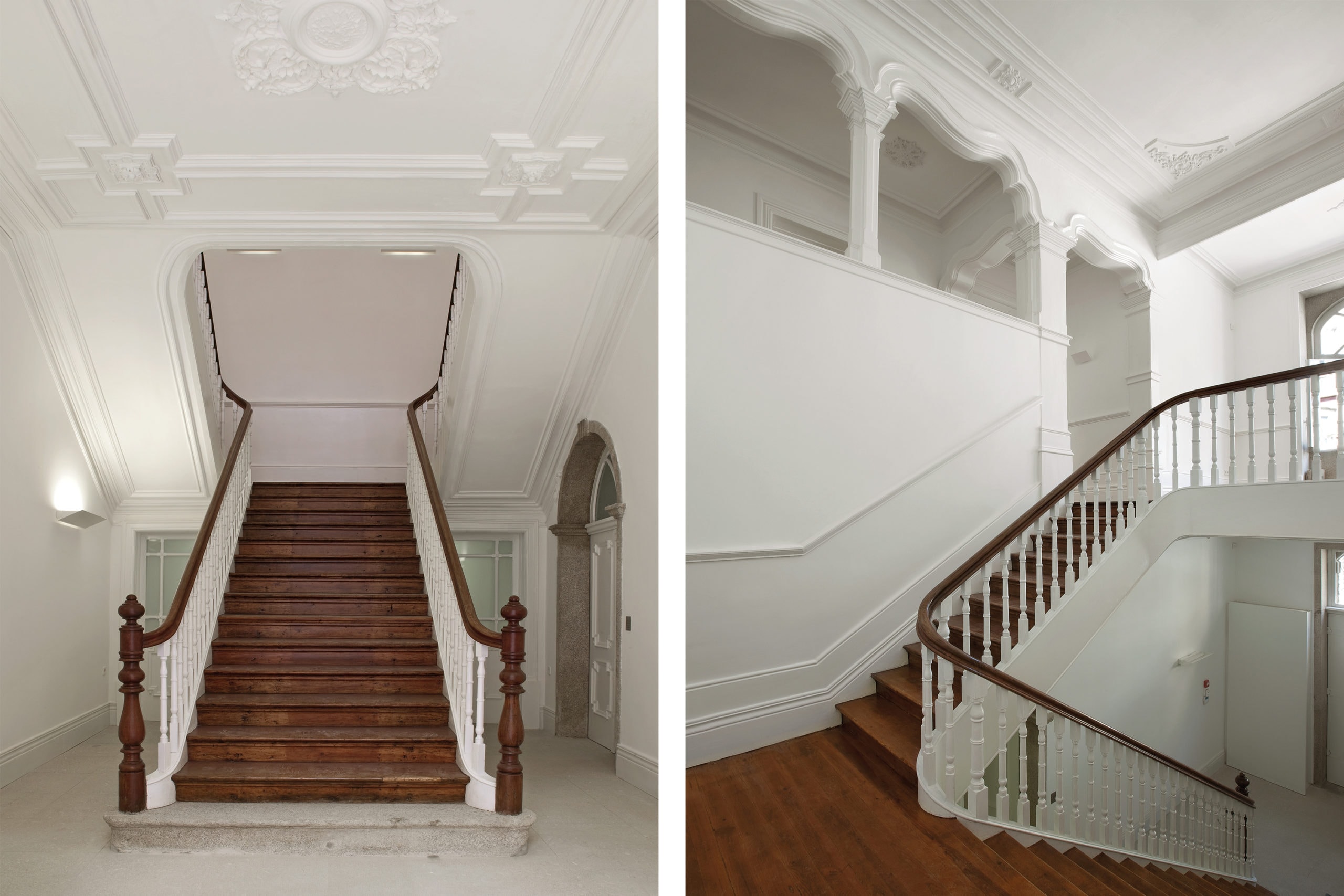The building to be rehabilitated, which functioned from its construction at the beginning of the 20th century until 2006 as the YMCA headquarters, was vacant. Designed by José de Vasconcellos de Lima Júnior, it was built between 1903 and 1904, clearly influenced by the prevailing ‘beaux-arts’ aesthetics. Commissioned by Alfredo Henrique da Silva, it was built shortly after the opening of Rua José Falcão, a street that divided a block, running parallel to the important Enlightenment radials. This situation meant that the lots in this street did not have the traditional measures that characterise the Porto lot (narrow, long, with an interior patio) – the lot has a long frontage of 13.5m and a depth of 32m, practically cancelling out the existence of a patio.
The project proposed the rehabilitation of the existing building and its reconversion to install an artisanal and semi-industrial confection unit for about 50 jobs.
The patrimonial value of the building imposed the criteria for the distribution of the programme.
The ground floor was destined to the support areas for the employees and to the production areas that implied the use of heavier and larger equipment (this was the only floor where a ground floor slab was built to absorb these loads, to carry out the necessary waterproofing and to cut the rising dampness observed). The noble staircase and the decorative treatment of the first floor suggested the location of the administrative areas.
The central production area was located in the hall (1st and 2nd floors) – the organisation of this space in open-space was designed to allow a full reading of its space and decorative work.
The proposed new counter (in contrast to the existing one) was designed to be autonomous from the pre-existing one precisely to make clear the different intervention times. On the pretext of reconverting the use, it was proposed to close the openings in this space (rear façade) and to open a new series of windows with a composition and geometry clearly distinct from the pre-existing spirit (the type of openings in this hall suggested a religious function far removed from the new use).
